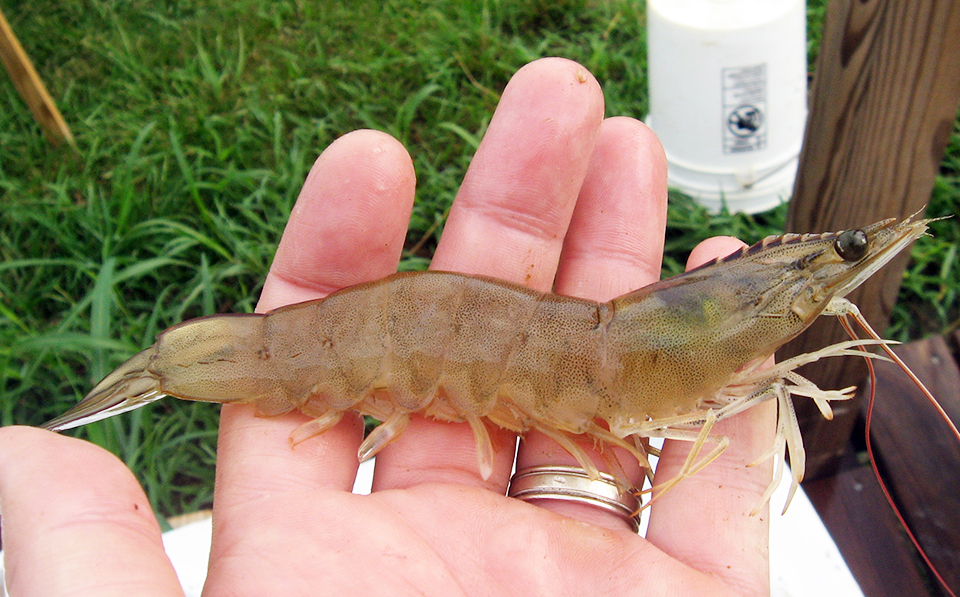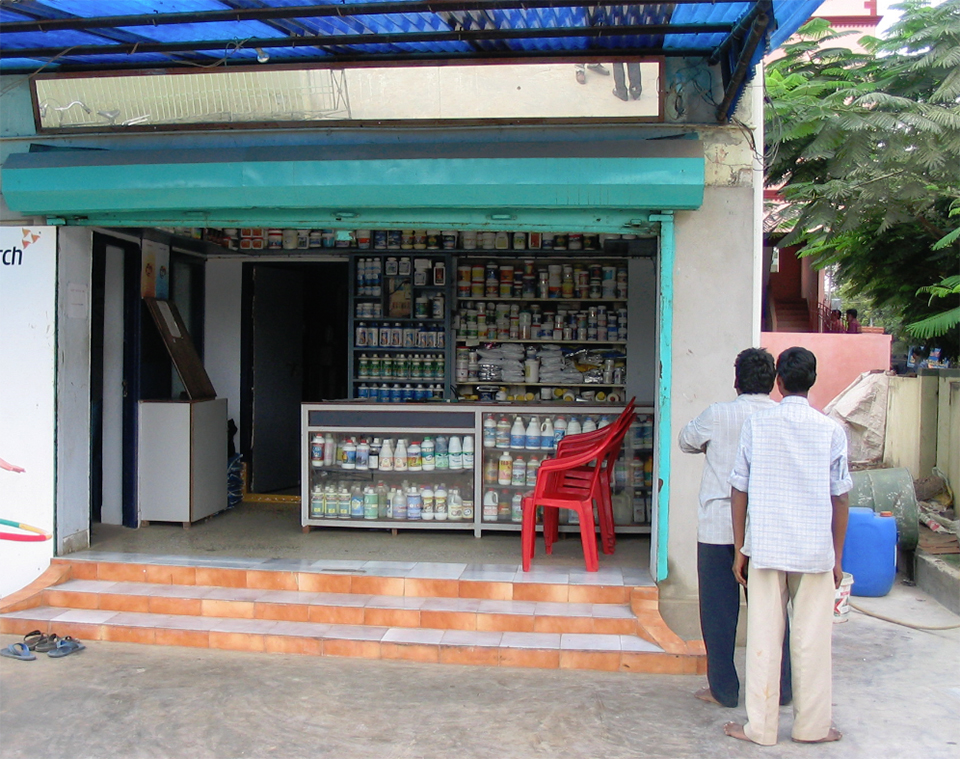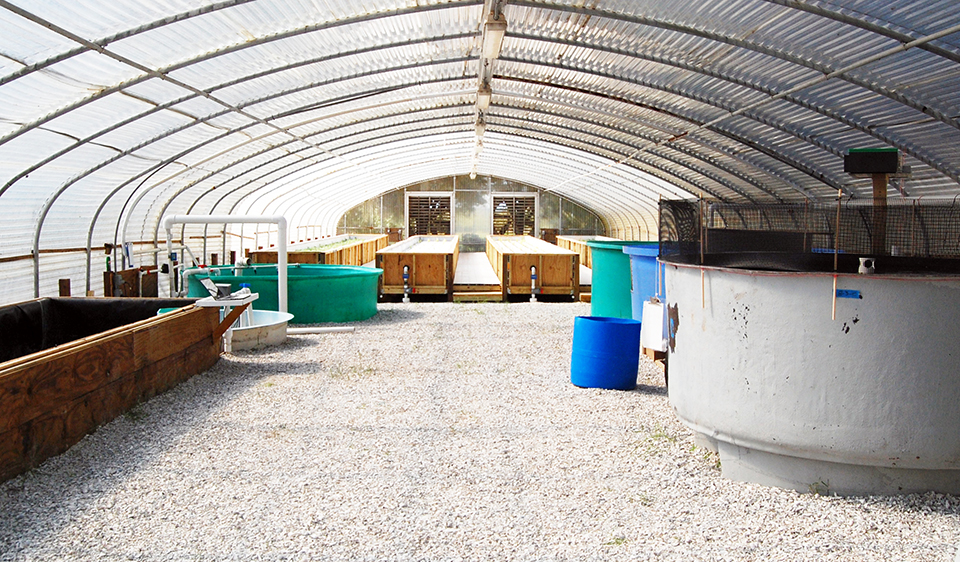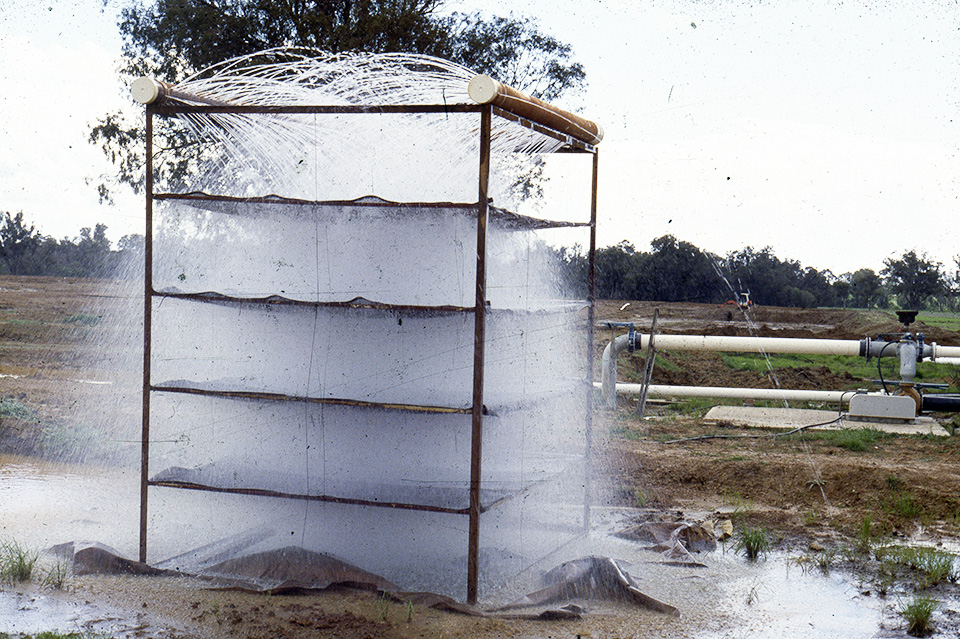Standard, consistent definitions needed
Low-salinity shrimp culture has spread from Thailand to Brazil, China, Ecuador, India, Israel, Mexico, Peru, the United States and possibly other countries. There is increasing interest in low-salinity shrimp culture in inland areas, because it is thought that disease control is easier to implement there than in coastal areas.
In some instances where marine shrimp farming spread into freshwater areas, conventional farmers and environmentalists became alarmed about the possibility for soil and water salinization. Ensuing discussion about this new trend in shrimp farming used terms like “low-salinity culture,” “shrimp farming in freshwater areas,” and “inland shrimp farming.”
Governments also are applying these terms in regulations. For example, Thailand banned the culture of black tiger prawns (Penaeus monodon) in freshwater areas. Implementation of the regulation, however, is hampered by the lack of a clear definition of freshwater areas. The establishment of accepted definitions for the terminology of low-salinity shrimp culture would help clarify the situation.
Low salinity
The normal salinity of ocean water in many parts of the world is about 34 ppt. Most shrimp culture has traditionally been done in water where salinity is 10 to 40 ppt during all or most of the year. Areas where salinity does not usually rise above 10 ppt should qualify as low-salinity when compared to traditional culture areas.
Defining freshwater
Freshwater is more difficult to define. The usual recommendations for drinking water quality state dissolved solids concentrations should not exceed 500 milligrams per liter (0.5 ppt salinity). Nevertheless, in some places, potable freshwater supplies contain 750 to 1,000 milligrams per liter dissolved solids (0.75 to 1.0 ppt salinity).
Most freshwater fish can survive and reproduce in water with up to 2,000 milligrams per liter dissolved solids (2.0 ppt salinity), and some species can tolerate even greater salinity. However, waters that support a good, mixed freshwater fish fauna in the United States usually have less than 500 milligrams per liter dissolved solids.
Recommendations on the protection of freshwater communities state that dissolved solids concentrations should not exceed 1,000 milligrams per liter (1.0 ppt salinity). Water with salinity above 1.0 ppt probably should be referred to as saline water rather than freshwater for the purposes of aquaculture.
A freshwater area obviously should be one that has year-round freshwater and nonsaline soils. In areas near the coast, the upper limit in streams and other water bodies of 1.0 ppt salinity during the dry season could be used to delineate freshwater areas from those with brackish water. A salinity of 1.0 ppt usually corresponds to a specific conductance of around 1,500 μS per cm (1,500 μmhos per centimeter). Land areas between streams could be considered nonsaline if the conductivity of a saturated extract of the soil solution is below 4 decisiemens per millograms or 4,000 μSper centimeter.
Inland areas
Inland areas are not necessarily freshwater areas. Surface water and soil in semiarid and arid regions can be saline. For example, pond water in semiarid regions can have salinities above 1.5 to 2.0 ppt during dry periods.
Ponds constructed in arid regions with saline soils and filled with freshwater from wells can have saline water because of the dissolution of salt from the soil and concentration of ions by evaporation. In a small, manmade lake filled with water from a city water supply in Texas, USA, I observed that salinity increased above 5 ppt over a two-year period. Freshwater fish stocked into the lake died from osmoregulatory stress.
Saline ground water
Saline ground water from wells is being used to culture shrimp in some areas. The presence of a saline aquifer does not guarantee that all underground water in the area is saline. Two or more aquifers can be stratified beneath the land surface at a given location.
I observed a situation in west-central Alabama, USA where two wells of different depths were developed within a horizontal distance of 20 meters. One well yielded water with a salinity of 8 ppt, but the other discharged water of less than 0.5 ppt salinity. One penetrated a deep saline aquifer, while the other took water from a shallow freshwater aquifer. There was an impervious stratum between the two aquifers.
Saline contamination
Downward seepage from a pond filled with saline water obviously could contaminate an underlying freshwater aquifer. The Claude Peteet Mariculture Center at Gulf Shores, Alabama, USA, located several kilometers from the coastline, takes brackishwater from the intercoastal waterway. A grass farm located about 2 km from the aquaculture center used freshwater from wells for irrigation.
Seepage from the ponds at the mariculture center caused the salinity of the aquifer that supplied the farm wells to increase. The ponds were therefore lined with plastic membranes to prevent further salinization of the aquifer.
Salinization of freshwater aquifers by coastal shrimp farming in India has also been documented. These aquifers occurred beneath land within the area of brackish water influence.
Underground water
Obviously, regulations intended to delineate freshwater areas should take ground water resources into account. There can be freshwater aquifers beneath brackish water in saline soil areas, and freshwater areas can have only saline aquifers beneath them. The delineation of areas with freshwater aquifers as opposed to saline aquifers may be more complex than the delineation of surface freshwater and nonsaline soil areas.
Terminology is further complicated by the fact that some shrimp, e.g., Macrobrachium rosenbergii, normally are cultured in freshwater, and nonnative shrimp species are sometimes imported for culture. In Thailand, the regulation that bans culture of marine shrimp in freshwater areas refers specifically to Penaeus monodon. Recently, P. vannamei was imported to Thailand. Since the regulation does not apply to this species, it must be changed if P. vannamei culture is to be prohibited in freshwater areas.
Suggested terminology
The following suggestions are offered in an effort to help standardize the terminology used to reference shrimp farming in nontraditional areas:
- Make clear reference to “marine” shrimp, as opposed to “freshwater” species.
- In regulations, list the species currently cultured and refer to others that could be cultured in the future. For example, “the culture of Penaeus monodon and other species of marine shrimp.”
- “Low-salinity culture” should refer to shrimp culture in water of 10 ppt salinity or less.
- “Freshwater” is water with a salinity of 1.0 ppt or less. Alternatively, freshwater could be defined as having a specific conductance not greater than 1,500 μS per centimeter.
- A “freshwater area” is one where the salinity in streams and other water bodies does not exceed 1.0 ppt
(specific conductance of about 1,500 μS per centimeter) and the electrical conductivity of soil does not exceed 4,000 μS per centimeter. - An “inland area” is located beyond the maximum upstream intrusion of brackish water (greater than 1.0 ppt salinity or 1,500 μS per centimeter specific conductance) in coastal streams during the dry season.
- The situation of freshwater aquifers below brackishwater areas should be considered in regulations.
Conclusion
There will be continued confusion if terms related to the current trend in shrimp culture outside traditional estuarine or seaside areas continue to be cast back and forth without definition in official and unofficial discussions and documents. It is hoped others will review the recommendations above and offer suggestions for improvements.
(Editor’s Note: This article was originally published in the October 2002 print edition of the Global Aquaculture Advocate.)
Now that you've reached the end of the article ...
… please consider supporting GSA’s mission to advance responsible seafood practices through education, advocacy and third-party assurances. The Advocate aims to document the evolution of responsible seafood practices and share the expansive knowledge of our vast network of contributors.
By becoming a Global Seafood Alliance member, you’re ensuring that all of the pre-competitive work we do through member benefits, resources and events can continue. Individual membership costs just $50 a year.
Not a GSA member? Join us.
Author
-
Claude E. Boyd, Ph.D.
Professor, Department of Fisheries and Allied Aquacultures
International Center for Aquaculture and Aquatic Environments
Auburn University
Auburn, Alabama 36849 USA[117,100,101,46,110,114,117,98,117,97,64,49,101,99,100,121,111,98]
Tagged With
Related Posts

Aquafeeds
Alternatives to fishmeal perform well in low-salinity shrimp farm trial
In a white shrimp farm trial in a low-salinity environment, alternatives to fishmeal did not negatively impact the growth, survival or FCR of the shrimp.

Responsibility
A review of water quality improvement products
Prof. Boyd examines products used by aquafarmers to improve water quality and conditions in their ponds and discusses their efficacy.

Responsibility
Aquaponic system produces red drum, saltwater vegetable species
A project in Florida is studying the feasibility of a marine aquaponic system containing red drum and two native saltwater species. Water that exits the plant raceways is filtered and recirculated to the fish tanks. In tests, sea purslane grew rapidly, while saltwort took almost four months to adapt. The fish exhibited high survival and achieved a feed-conversion ratio of 1.2.

Responsibility
Assessing groundwater quality in aquaculture
Those interested in using groundwater for aquaculture should perform a thorough chemical analysis of the water. Several problems related to groundwater use in hatcheries and holding or transport vessels can be alleviated by degassing or aeration.


